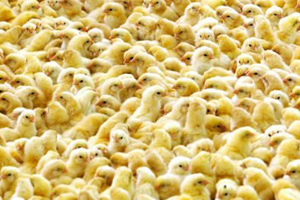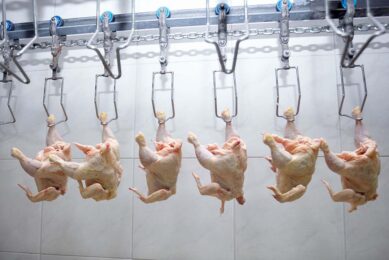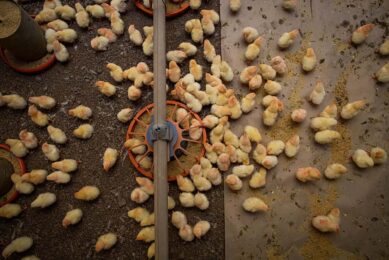Bright future predicted for Chinese poultry industry

Dr Mark Lyons, vice president corporate affairs at Alltech, presented his vision for the China poultry industry at the recent 2013 International Poultry Forum in Beijing.
Today’s Chinese customers are becoming more conscious of what they eat; higher quality, safe, traceable and tasty meat products are more important than ever in the Middle Kingdom. But who are these consumers? As Dr. Mark Lyons described, they are young, educated Chinese people building a strong middle class in the huge country who are willing to pay more for quality. And, this new generation is intensively using social media to express their concerns about the Chinese food safety.
Recent Chinese food scandals continue to pressure the meat industry to change the way it looks at animal production. Companies such as KFC have strongly suffered from the traceability scandal that exploded less than a year ago when the Chinese state-owned CCTV stated in a report that Yum! Brands (corporate owner of KFC) chicken were fed with chemicals and treated with antibiotics. Just as the case began to fade, the Chinese industry was hit by influenza and other health challenges at farm level. The financial loss that H7N9 caused this year is estimated to be well over RMB 40billion. Consumers reduced their poultry consumption, the live bird markets closed in many areas and day-old chick and live-bird prices fell significantly.
As David Byrne, former EU commissioner for health and food safety, said, there are two types of companies: those that already had a crisis and those that will. Several examples from the last decade showed that most of the Chinese companies are not prepared for handling crisis. Lyons urged the industry players to have crisis management plans. As he described, every organisation has to have a person or select crisis management group who is in charge of making quick decisions and communicating effectively both within the organisation and outside.
Besides the recent food scandals, Chinese social media has been playing a vital role in the shifting consumer landscape. Sina Weibo, QQ, Qzone, WeChat and yokou are popular social media sites that are connecting close to a billion people in China. The influence of Chinese social media is so powerful that, according to a recent study, close to 40% of Chinese people (ages 18-34) look for information on social media before they make decisions on product purchases. In the case of last year’s KFC issue, the negative story spread immediately through social media, resulting in an immediate drop in KFC’s sales in the country and forcing the company to take action.
Chinese customers are putting increasing pressure on the government to take action and introduce stricter legislation in food safety. The Chinese State Council, for instance, implemented a national-level quality control blueprint for Chinese companies in 2012, which stressed the importance of building a strong country with high product quality by 2020.
Lyons sees the future as bright for the poultry industry. He forecasts that meat prices will have a mild recovery when disease ends due to high inventory of frozen chicken. In the short term, China’s economic growth is expected to return to 8 percent in 2013, which will greatly support poultry consumption as institutional buyers may increase poultry purchases and QSR sales may improve. Overall, China’s poultry market will remain stable in the coming year, said Lyons.
Dr. Mark Lyons, vice president at Allech.
Join 31,000+ subscribers
Subscribe to our newsletter to stay updated about all the need-to-know content in the poultry sector, three times a week. Beheer
Beheer








 WP Admin
WP Admin  Bewerk bericht
Bewerk bericht